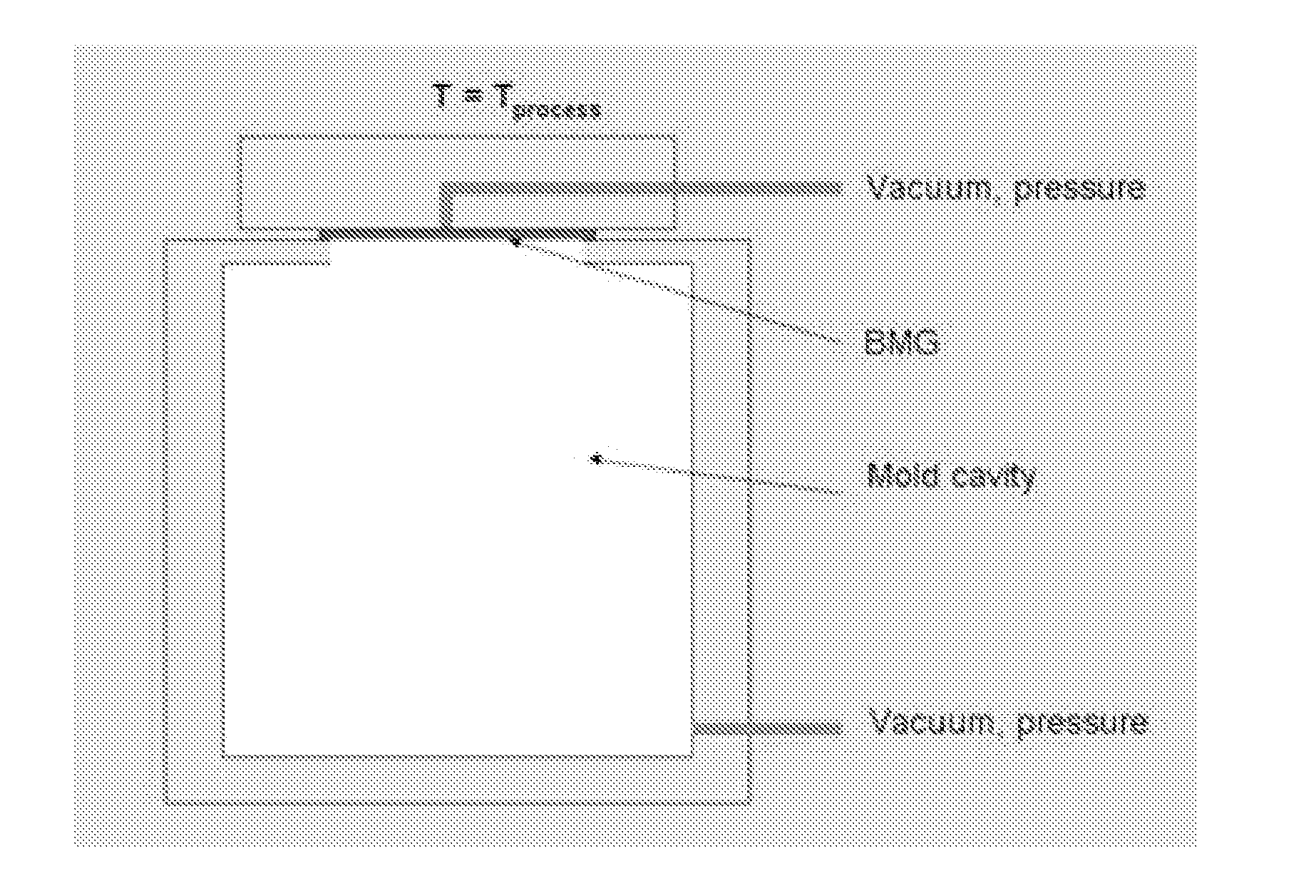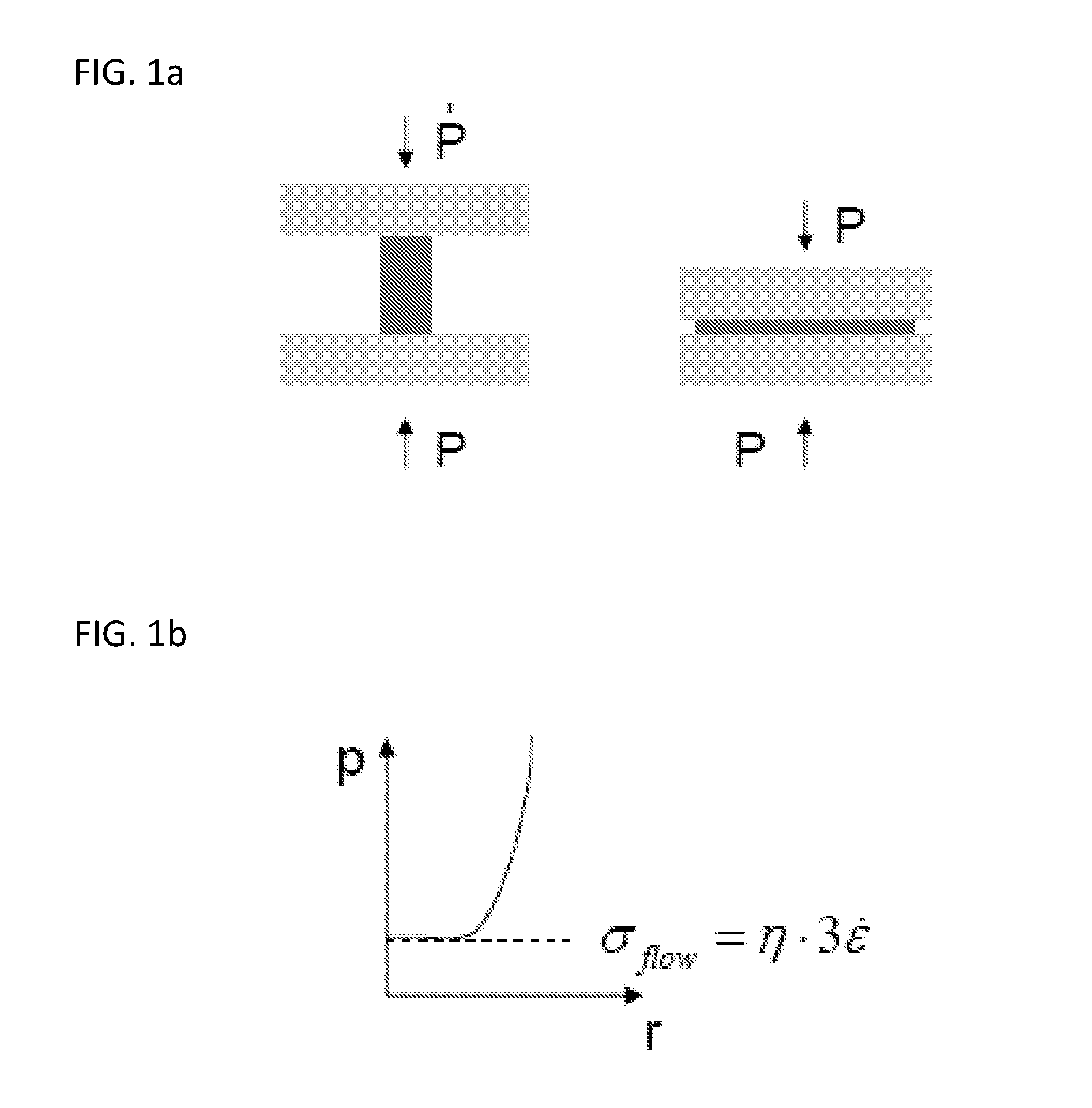Method of blow molding a bulk metallic glass
a technology of metallic glass and bulk metal, which is applied in the field of improving the method of blow molding complex and thin-walled articles, can solve the problems of limited applications to which bmgs may be applied, limited geometries achievable with the vast majority of bmgs, and no or very limited plasticity of bmgs
- Summary
- Abstract
- Description
- Claims
- Application Information
AI Technical Summary
Benefits of technology
Problems solved by technology
Method used
Image
Examples
example 1
Forming Pressure Study
[0086]The forming pressures required in the blow molding of a BMG in its supercooled liquid region in accordance with the current invention is demonstrated in FIG. 19. In this study, a 0.8 mm thick Zr44Ti11Cu10Ni10Be25 disk was formed through a circular opening of 4 cm at a temperature of 460° C. The disk section covering the opening was formed into a hemisphere under a pressure, which was generated with the sole power of the human lung (˜104 Pa). The forming process took less than 100 s, which corresponds to a strain rate of ≧10−2 s−1. At the 460° C. processing temperature used in this study, crystallization becomes detectable after 255 s compared with the processing time of 100 s. (See, T. Waniuk, J. Schroers, W. L. Johnson, Physical Review B, 67 (2003) 184203, the disclosure of which is incorporated herein by reference.) The cross-sectional area revealed some thinning of the material. For example, at the edge of the opening the material is 0.72 mm thick comp...
example 2
Mold Forming Study
[0088]FIG. 20 depicts two net-shaped parts that were processed by heating a blank of Zr44Ti11Cu10Ni10Be25 to 460° C. and applying a pressure gradient of 2×105 Pa (0.2 MPa) for ˜40 s. As shown, this study demonstrates that complicated geometries net-shape parts can be replicated with this technique.
example 3
Replication of Surface Features
[0089]FIG. 21 demonstrates both that small features can be replicated using the gas pressure shaping technique of the current invention and that plaster molds may be used. Specifically, in this example a blank of BMG was expanded into a plaster mold. The top image shows the front of the final article formed in accordance with this method, and the bottom image back of the final article formed in accordance with this method. As shown, the smallest features in the mold can be replicated over a large area with this technique even with such low forming pressures.
PUM
| Property | Measurement | Unit |
|---|---|---|
| Fraction | aaaaa | aaaaa |
| Fraction | aaaaa | aaaaa |
| Fraction | aaaaa | aaaaa |
Abstract
Description
Claims
Application Information
 Login to View More
Login to View More - R&D
- Intellectual Property
- Life Sciences
- Materials
- Tech Scout
- Unparalleled Data Quality
- Higher Quality Content
- 60% Fewer Hallucinations
Browse by: Latest US Patents, China's latest patents, Technical Efficacy Thesaurus, Application Domain, Technology Topic, Popular Technical Reports.
© 2025 PatSnap. All rights reserved.Legal|Privacy policy|Modern Slavery Act Transparency Statement|Sitemap|About US| Contact US: help@patsnap.com



